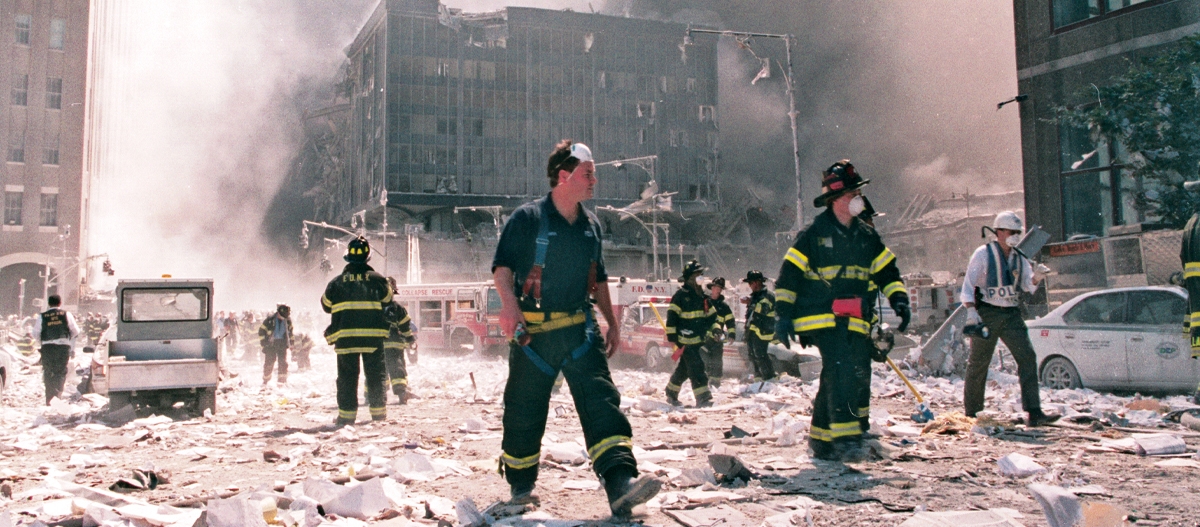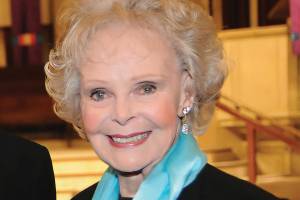By SUZY HOLT
Oct 7, 2001 Circling to land at La Guardia that early October evening, I searched the island for a tell-tale sign. There it was, a smudge in the air hovering over a small portion of lower Manhattan.
Deplaning, I noticed an unusual courtesy among the passengers going through the motions of making their way from the gate, passing newly armed security guards, seeking their luggage, climbing aboard the express bus to Grand Central Station.
This sober and gentle atmosphere was in stark contrast to the distant and impatient, even angry, mood I encountered in a previous visit to the city a decade past.
Many fellow workshop registrants from around the country responded to the pervasive fear and cancelled their flights into the city for the workshop. I appreciated that the workshop was not postponed, and it gave me reason to be in the middle of this extraordinary circumstance.
I felt compelled to get to New York to bear witness to an historic, world-shaking phenomenon, just as I had wanted to visit eastern Europe soon after the Berlin wall came down but ended up in Latvia, Estonia, and Russia as the Soviet Union was collapsing.
Just to see for myself. This strangeness of atmosphere heightened as I descended the stairs under the renowned Grand Central Station, to find a nearly empty, vast, and gray hollow of the downtown subway platform. Here more armed security guards stood vigilant, and a CNN news crew captured the unusual scene, one measure of the continuing impact of the calamity just three weeks prior.
I turned to a professionally dressed, middle-aged woman standing near me and said, “Osama succeeded beyond his wildest dreams, didn’t he.” She looked at me with a tired, severe expression and responded emphatically in a bitter tone, as to a child, “You have no idea.”
This brusque response piqued my curiosity, and I wanted her to elaborate but she turned sharply away and boarded the train that had just arrived.
The hotel I had booked lay slightly north of the area of the damaged transportation systems that usually make the lower Manhattan hum with activity. It was modest, just short of shabby, safe in an artsy Chelsea neighborhood, near the location of my workshop, and easy on my employer’s (Lewis & Clark Library) budget.
The desk clerk was slightly built with hunched shoulders, a small head topped with sandy hair, and a face shadowed by anguish that was amplified by his embarrassed gratitude.
“Thank you so much for staying with us; we’ve been hit hard with all the cancellations. It’s really depressing, and I can’t thank you enough for being here.” I was struck by his emotion and murmured, “Of course,” and went to find my room and put my clothes away.
The next day was free, so I set out early that morning to see what I could discover. I started walking south as the subway stations were closed due to underground damage. Bus service beyond my location was cancelled. I walked through the Chelsea neighborhoods and down into Greenwich Village as shopkeepers hosed down their sidewalks, swept debris into the gutter, and set up tables and chairs in hope of customers.
It was at Houston Street deep in the Village that the first hint of the odor of the disaster struck me. I kept walking, beginning to grow wary, and, as I drew nearer, the odor became stronger. My nose rebelled. What composed that smell?
One doesn’t really want to imagine it. The steel, aluminum and plastic of buildings, desks, electrical systems, lighting fixtures, briefcases, handbags, cleaning chemicals, leather sofas, dress shoes, wedding rings, filing cabinets, coffee makers, pop machines, and, of course, the unthinkable, thousands of men, women, and children.
My nose did not want to accept this odor it knew to be unnatural, even evil. It closed itself and refused to breathe. Gasping, I persevered through the Village’s narrow and twisted byways, occasionally encountering somber and newly courteous pedestrians, each making way for the other, some sharing a sympathetic glance.
Growing closer still, blocks of streets were jammed with Verizon vans, their employees working around the clock to restore communications in the area. Posters covered shop windows and walls with word of free counseling sessions and notes of appreciation for the firemen and workers at the site.
There were peace signs and, most painful to witness, photos of missing husbands, wives, children, parents, and lovers with handwritten notes pleading, “Have you seen…..?”
I began to circumnavigate the barricaded area, still many blocks from what was being called “Ground Zero.”
Along the way I passed several fire stations tucked cave-like into the neighborhood row houses. Ubiquitous in front of the stations were dozens of candles, bouquets of flowers, and notes expressing sorrow at the loss of their colleagues and appreciation for their brave, fatal service. I sometimes stopped to relight candles that had blown out, absorbing the palpable compassion evident in every block.
Here, long tables of students with notepads and pens urged passersby to write their own message for workers, to add to the makeshift plywood wall already papered for yards. I did. There, a diner closed for business was open for workmen to take a break, have a cup of coffee, munch cookies and sandwiches made by volunteers.
Inside I could see disheveled, burly men with haggard demeanor silently eating as they sprawled in a tense effort at relaxation and brief release from the trauma of their search There was not a glimmer of the joking and laughing one might expect from a group of laborers taking a break.
Within the barricade I saw a man in a lift truck, power-hosing the exterior of a church with statues of Mary and saints that adorned the sides. Filling the street along the sidewalk were rows of porta-potties for the churning anthill of workmen inside.
Continuing on, I moved past the streets and awnings of dark stores and restaurants still covered in—dare I say it—the cremains of the World Trade Center buildings and their inhabitants.
I noted as much as 3 inches on the awning of one Japanese eatery. Intact windows had been no protection. In one clothing store window, three mannequins were draped shoulder-to-shoulder with cashmere sweaters layered with a half-inch of the dust.
Looking through the dusty window, I saw that the dim interior was similarly coated. No one was inside, nor in any of the neighboring shops.
I drew closer to a street with a direct view of the site itself. The sidewalks grew more full with others trying to comprehend the magnitude of what happened. Faces were solemn and silent in subdued grief.
More posters pleaded for news of a loved one, more posters on shop windows gave notice of free counseling services. Now posters shouted forth “Not in our name,” protesting the government’s response by making war.
A protest rally was scheduled in two days at St.Marks on the Bowery, led by famous antiwar activist Father Berrigan. “Make love not war” and peace symbols appeared everywhere. I was moved by the rejection of vengeance-seeking on the part of this community most affected.
Down one street within the barricades, I saw a smartly dressed woman in high heels lugging a large, rolling suitcase behind her with a smaller one tied atop. She had been allowed in to gather belongings from her apartment.
A man in jeans and jacket pushed one cart ahead and pulled another behind, piled with a TV and lamp along with clothes and other miscellany of daily life. I wondered how long they would be displaced. I wondered at their trauma. Were they waiting to hear of a loved one? Could they focus? Did they still have a job?
Next I came onto a crowd of people straining against the barricade and staring with unbelieving, stunned expressions down the street with the direct view of the twisted beams of the first tower. National Guard men and women monitored the crowd with compassion.
These were not tourists, nor mere sightseers. Many carried briefcases, others the daily paper or shopping bag. Smoke still rose from parts of the scrambled wreckage. Dozens of men were visible on the rubble in their painstaking, macabre attempt to find parts of bodies and belongings. I took a photo of the people pressed together at the barrier in silent incomprehension.
It wasn’t until I returned to Montana and printed the photo that I noticed. Every face in that crowd had the same somber expression but was a different shade of white, red, yellow, and black.
“This is the true face of America today,” I thought, startled by this sudden revelation. It’s not Montana, nor most rural states.
By late afternoon I was starving. I continued around the perimeter, now at the southern tip of the site, and found a small Vietnamese diner that was open. Inside were only the owner and his daughter, no customers.
Again, I experienced the gratitude that embarrassed me in my own well-being. They apologized that the menu was limited, because they were unable to get supplies. I was happy to just sit for awhile and take whatever they had. They served me a soda. We chatted quietly.
Their uncertainty and anguish about their unknow future was heartbreaking. I realized they were there because they simply didn’t know what else to do. My hunger faded into irrelevance.
Rested, I left a large tip and set out in what now felt like a compulsive pilgrimage. I came to a corner with a 10-story parking garage, a wonder in itself to my small city eyes. It was full of luxury cars coated with a heavy layer of the ubiquitous dust.
I stopped suddenly, my stomach lurching, realizing that the owners of these cars would not be coming back for them. At another corner, I looked down the street toward a different section of the ground zero site. An artist was set up with his easel about midway to the barricade. He wore a mask against the smell and the dust.
I walked down to watch as he worked on a pastel representation of the wreckage ahead. It was dramatic and well done. I surmised it could become an iconic image of the day. I felt slightly conflicted, applauding his talent and effort, but I wondered briefly if it was a bit opportunistic of tragedy. No, it was a documentation.
Finally, I turned north along the Hudson river. I had been walking 10 hours since leaving the hotel, and surely had another hour for my return. I turned away from the site and carried a burden of sorrow but also felt relief at leaving the wreckage behind.
These several direct eye, ear, nose, skin contacts with various aspects of the disaster gave me resource from which to try comprehending the scope of it.
There were few pedestrians. Apartment buildings were dark in the deepening rose of evening. Ahead was a park of sorts, a large concrete floor with concrete benches and low encircling walls.
A middle-aged man stood at a wall, his suit jacket held over his shoulder, and stared pensively in the direction of the towers’ site.
I strolled over to him to share the contemplation. He lived in the neighborhood and was mourning the loss of the buildings themselves. He asked where I was from and then tried to explain his loss.
“Every morning I would look over to the Towers. That’s how I could tell what the weather was. The sun and shadows on the buildings would tell me the time. It was so beautiful, the colors it would reflect! It was always present.” He paused for a long moment.
“Imagine looking up one morning and one of your mountains has disappeared.” MSN








